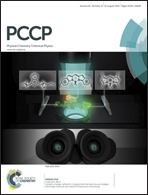First-principles study of native point defects in LiNi1/3Co1/3Mn1/3O2 and Li2MnO3
Abstract
We have studied native point defects in the layered oxides of LiNi1/3Co1/3Mn1/3O2 and Li2MnO3, the promising cathode materials for rechargeable Li-ion batteries for the application of high lithium capacity, by performing first-principles calculations. Through the calculations of formation energies for native point defects in LiNi1/3Co1/3Mn1/3O2, it was found that the Ni vacancy and the LiNi antisite are the most dominant defects, which shows a good agreement with previous experiments. Contrary to the previous experimental analysis, however, the NiLi antisite defect is not dominant, even though both Ni and Li ions have a similar ionic radius. In Li2MnO3, the LiMn antisite defect is dominant under the O-rich and Mn-poor condition. In contrast, the MnLi antisite, the Li vacancy in the Li layer, and the oxygen vacancy are dominant at the chemical potential of the boundary in equilibrium with Li2O. To enhance the migration of Li ions for achieving high power, the experimental syntheses of LiNi1/3Co1/3Mn1/3O2 under the Ni-rich condition and Li2MnO3 under O-rich and Mn-poor condition were suggested. For Li2MnO3 suffering from poor electronic conductivity, it was found that the electronic conductivity can be increased by p- and n-type extrinsic doping under the O-rich and Mn-poor condition and the chemical potential of the boundary coexisting with Li2O, respectively, without losing the Li ion conductivity.


 Please wait while we load your content...
Please wait while we load your content...